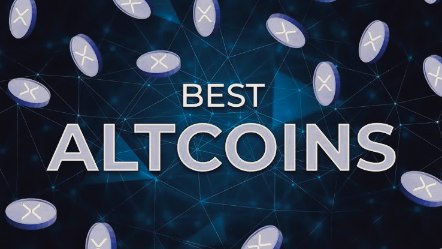Introduction
Bitcoin may have paved the way, but the altcoins universe has exploded into a galaxy of innovation, controversy, and opportunity. As we step into 2025, the crypto ecosystem looks nothing like it did just two years ago. From AI-driven tokens to quantum-resistant blockchains, altcoins are redefining finance, governance, and even art. But with great potential comes great volatility—and risk. Whether you’re a curious newcomer or a seasoned trader, this guide will unpack everything you need to know about altcoins in 2025, including what’s hot, what’s not, and how to navigate this high-stakes market.
What Are Altcoins? (A Quick Refresher)
Altcoins—short for “alternative coins”—are cryptocurrencies other than Bitcoin. While Bitcoin remains the OG of digital gold, altcoins have diversified into niches like decentralized finance (DeFi), gaming, AI, and privacy.
Key Types of Altcoins in 2025:
- DeFi Powerhouses: Platforms enabling lending, borrowing, and trading without banks.
- AI Tokens: Coins powering decentralized AI networks and data markets.
- Privacy Coins: Assets focused on anonymous transactions (despite regulatory pushback).
- Meme Coins 2.0: Viral tokens with actual utility (yes, really).
- Interoperability Chains: Projects bridging blockchains for seamless cross-chain transactions.
Altcoin Evolution: From 2011 to 2025
Let’s rewind the clock to see how we got here:
- 2011–2017: The Wild West Era
Litecoin and Ethereum laid the groundwork, while ICO mania (and scams) dominated the mid-2010s. - 2018–2022: Regulation Meets Innovation
The rise of DeFi, NFTs, and institutional interest collided with crackdowns in China and the U.S. - 2023–2025: Maturation and Mass Adoption
- Regulatory Clarity: The EU’s MiCA framework and U.S. crypto laws brought structure—and constraints.
- Tech Leaps: Zero-knowledge proofs, modular blockchains, and quantum-resistant algorithms went mainstream.
- Institutional Onboarding: BlackRock, Fidelity, and Visa now offer crypto services, boosting legitimacy.
- AI Integration: Projects like Fetch.ai and SingularityNET merged blockchain with AI, creating new economies.
Top Altcoins to Watch in 2025
The market is still volatile, but these projects combine innovation with staying power:
- Ethereum (ETH)
- Market Cap: $450B+
- Why It’s Hot: The backbone of DeFi and NFTs, now fully scaled with Ethereum 3.0 (hello, 200k TPS!).
- Solana (SOL)
- Market Cap: $120B+
- Why It’s Hot: Survived the “Great Solana Outage of 2023” to dominate payments and gaming.
- Chainlink (LINK)
- Market Cap: $30B+
- Why It’s Hot: The go-to oracle network for real-world data in DeFi and AI ecosystems.
- Monero (XMR)
- Market Cap: $8B+
- Why It’s Hot: Privacy coins are back (discreetly) after adapting to regulatory KYC tools.
- Avalanche (AVAX)
- Market Cap: $25B+
- Why It’s Hot: A favorite for CBDCs (Central Bank Digital Currencies) and enterprise use.
- NEAR Protocol (NEAR)
- Market Cap: $15B+
- Why It’s Hot: AI developers flock to its user-friendly, high-speed blockchain.
- PepeCoin (PEPE)
- Market Cap: $5B+
- Why It’s Hot: The meme coin that added utility—think NFT auctions and DeFi integrations.
Pros and Cons of Altcoin Investing in 2025
Pros:
- Diversification: From AI to real estate tokenization, altcoins offer exposure to cutting-edge sectors.
- Staking Rewards: Earn 5%–15% APY on proof-of-stake coins like Ethereum and Cardano.
- Early Adoption Gains: New niches like decentralized AI could mirror Ethereum’s 2015–2024 growth.
Cons:
- Regulatory Roulette: Privacy coins face bans; even “compliant” projects grapple with red tape.
- Tech Risk: Quantum computing advances threaten older encryption methods (looking at you, Bitcoin).
- Market Saturation: Over 25,000 altcoins exist—90% could fail by 2030.
A Cautionary Tale:
In 2024, “QuantumGuard” (a quantum-resistant coin) hyped its tech but collapsed after audits revealed flaws. Many lost life savings chasing the “next big thing.”
How to Invest in Altcoins Safely in 2025
- DYOR (Do Your Own Research)
- Scrutinize whitepapers, tokenomics, and teams. Use AI tools like CoinScope to detect red flags.
- Ask: Does this project have long-term viability, or is it riding a hype cycle?
- Pick the Right Exchange
- Regulated platforms like Coinbase and Kraken are safest. Avoid unlicensed offshore exchanges.
- Embrace Cold Storage
- Use biometric hardware wallets (e.g., Ledger Nano X2) for large holdings.
- Diversify Strategically
- Allocate 70% to blue-chips (ETH, SOL), 20% to mid-caps (AVAX, NEAR), and 10% to moonshots.
- Stay Alert
- Follow crypto sleuths on X (formerly Twitter) and set Discord alerts for portfolio projects.
Future Trends Shaping Altcoins in 2025 and Beyond
- AI-Blockchain Fusion
- Tokens like Ocean Protocol fuel data marketplaces where AI models train on decentralized data.
- CBDCs and Altcoins
- National digital currencies (e.g., the digital euro) will compete—or collaborate—with DeFi.
- Quantum Resistance
- Projects like QANplatform lead the charge in quantum-proof blockchains.
- DeFi 3.0
- Insitutional DeFi platforms offer compliant yield farming and derivatives.
- NFTs 2.0
- Dynamic NFTs now represent real-world assets like patents, carbon credits, and event tickets.
Conclusion: Is Altcoin Investing Worth It in 2025?
Altcoins are no longer a niche gamble—they’re a gateway to the future of finance, tech, and governance. While risks remain (rug pulls, regulation, tech obsolescence), the rewards can be transformative for savvy investors. The key? Stay informed, stay skeptical, and never let FOMO override logic.
Final Tip: Start with a small portfolio, experiment with staking, and join DAOs to learn while you earn. The altcoin revolution is just getting started.
